Workshop guide to repairing plastic
By Steve Cooper, VJMC Editor
Plastic panels on Japanese motorcycles have been around a lot longer than many folk think. It wasn’t the advent of plastic rockets that saw moulded synthetics being used en masse; as far back as the late 1950s, the Japanese were using various types of plastic for non-structural items. The benefits in the construction of a motorcycle are numerous; consistent repeatable product, light weight, easy to form in complex shape, corrosion resistant. The downsides for we would-be restorers are sadly severe; said plastics are easily scratched, fail under relentless UV exposure, and crucially for us lot, are hard to repair. If you’ve ever tried to sort out a panel following your mate’s advice, “nah, forget all that complicated and expensive stuff, you just need to go over it with a soldering iron and some filler”, you’ll know it generally ends in tears.
There are several professional repair options out there and most work well enough. However, dependent on the type of plastic, the nature of the damage and quality of the materials, DIY repairs can range from perfectly acceptable all the way down to chuck-it-in-the-bin level. On the workshop bench there’s a perfect example of the latter…or almost. It’s a mudguard from a 60’s Yamaha and had suffered severe trauma. Its issues had been addressed with a professional plastic repair kit and then further strengthened with supporting mesh and supposedly flexible filler. However, the way it creaks and groans when it’s handled suggest all is not well beneath the surface
So, is there a better way to repair plastics such as this? Walking around the Stafford show last year, I came across the guys from Supa-Fix demonstrating what looked like a really good product. Unlike many apparent wonder products, APX4 didn’t look like a snake-oil special and in discussion with the Supa-Fix team it was apparent they had tremendous faith in what they were selling. They made repairing plastics look like child’s play, so this big kid just had to have a go. After all what did I have to lose, other than perhaps another failed repair?
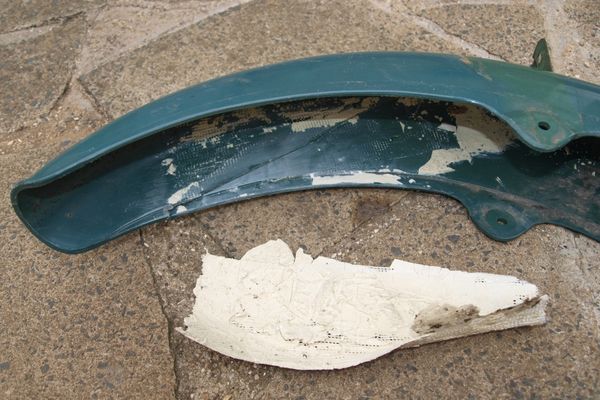
Just a gentle tap had the filler lifting of the primed plastic and even gentle handling had the crack gaping once more. Miffed? You betcha!
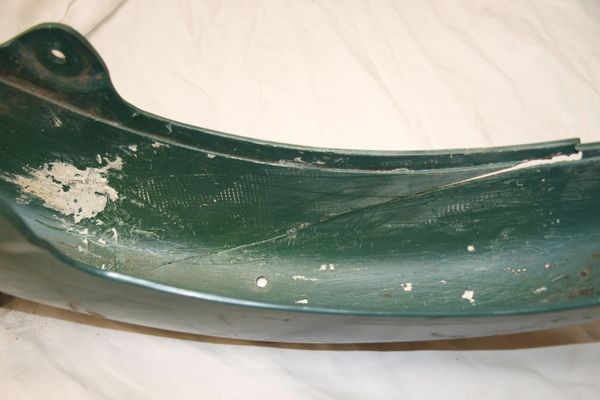
First job is to ensure any previous repair material is removed. Rotary brushes, scrapers, files abrasive pads…anything that removes all traces of what’s happened before is perfectly acceptable.
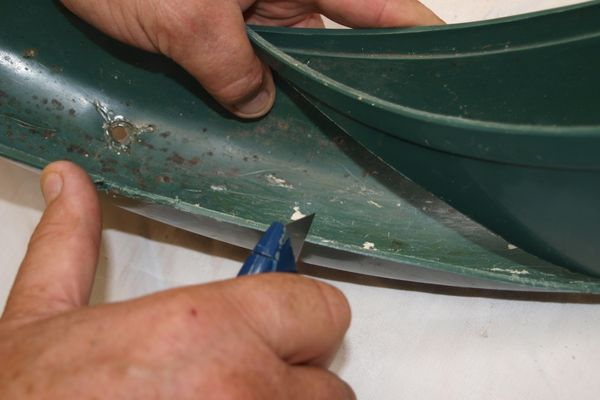
The actual jointing surface could do with a freshen up, so I’ve scraped carefully with a new craft knife blade. The plastic is then blown clean with an airline and finally degreased with some brake cleaner.
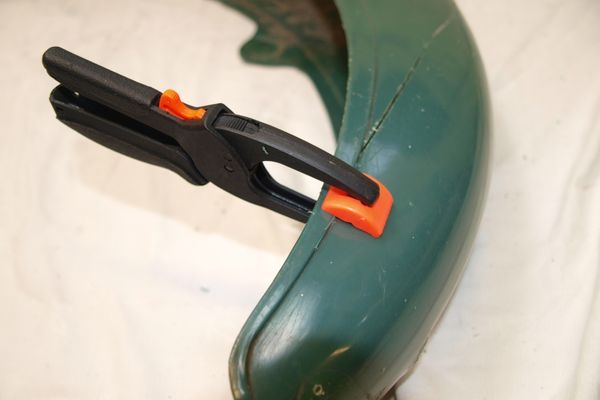
A dry run is essential before the repair process starts. Some cheap clamps from a DIY shop make the ideal holding and positioning tools.
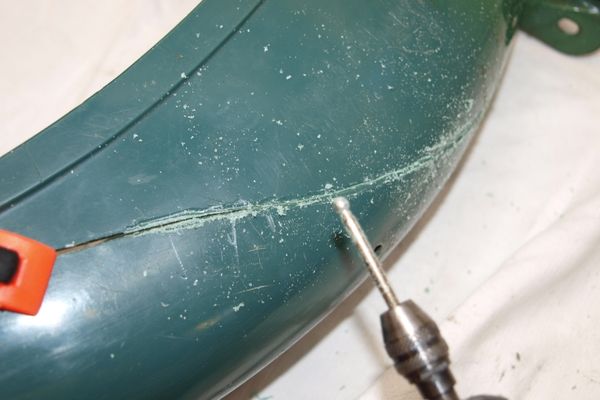
A V shaped groove needs to be machined into the areas requiring joining. A Dremel or similar fitted with a rotary burr works fine. Ensure the plastic doesn’t overheat or melt. Lots of gentle passes are better than one big hit.
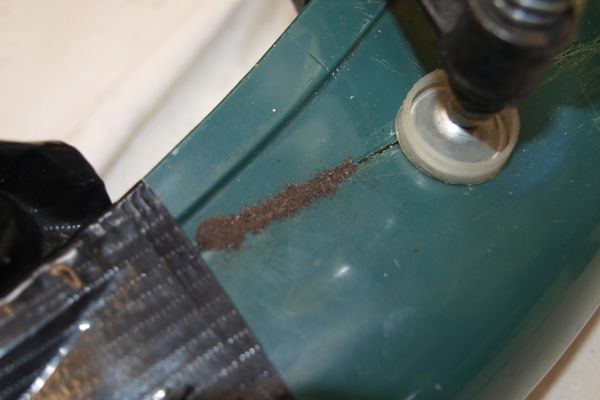
A clamp and duct tape hold the broken parts in alignment whilst some of the Supa-Fix repair powder is carefully deposited into the freshly cut V groove.
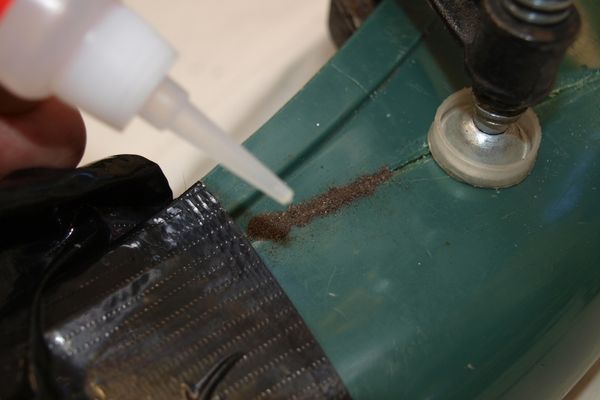
Without disturbing the mudguard or the repair powder, some of the supremely low viscosity adhesive is precisely dribbled onto the repair powder, where a reaction takes place instantly.
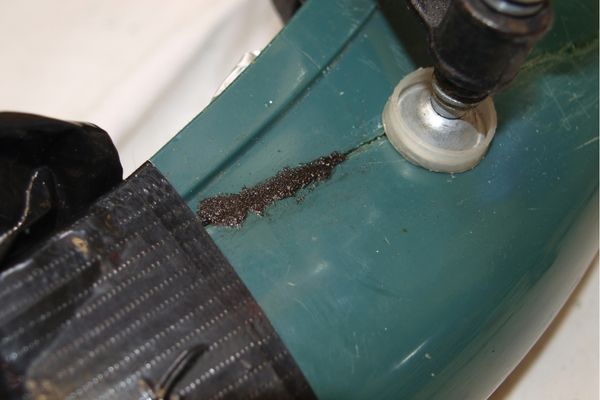
The powder and adhesive combine to give an amazingly tenacious bond which forms literally within seconds. This allows the clamp and tape to be removed, ready for the next section of the repair.
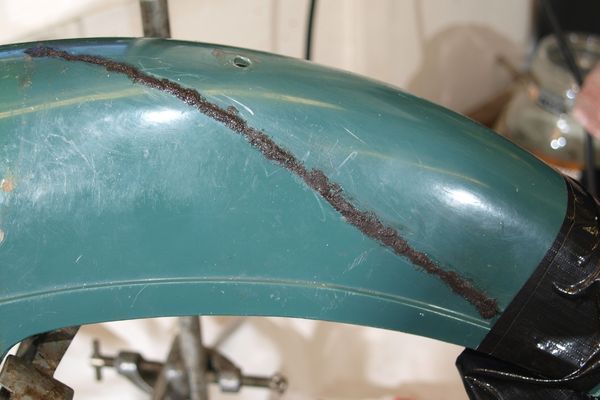
Working systematically, the entire length of the crack is effectively stitched together to form what’s rapidly becoming a remarkably strong bond.
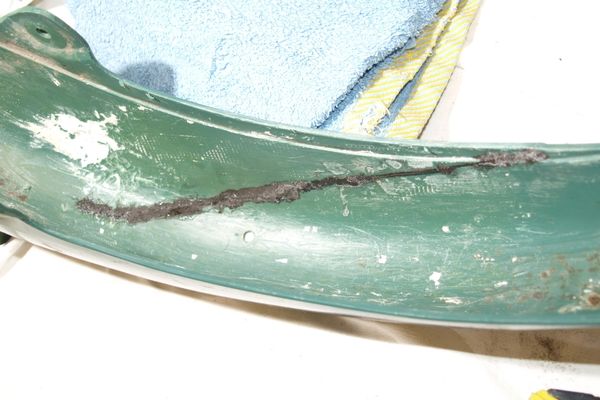
Replicating the technique on the underside of the mudguard soon has the joint totally repaired, ready for finishing.
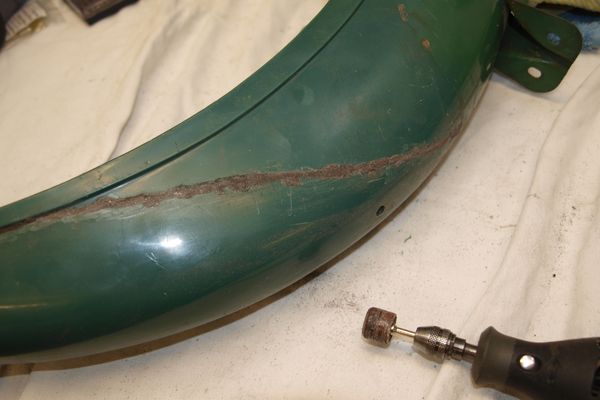
Any overfill can be readily trimmed back using the trusty Dremel and the panel is then ready for the painters to do their stuff with.
Similar issues with a Suzuki X7 side panel are easily resolved using a small section of aluminium sheet to strengthen a well know weak spot. The metal is drilled to enhance the bond and aid adhesive preparation.
And finally, the same kit comes to the rescue of a modern bike. This plastic KTM tank was leaking in several areas, and nothing used to date had worked. Twenty minutes preparing and repairing have the tank sorted ready to use and leak free.
What’s amazed me is just how elegantly simple this repair technique is. There’s no requirement to mix resins in carefully measured amount, no need to heat or melt filler rods and no prerequisites other than a clean surface and few simple holding devices. In true investigative journalist style, I even tried to break the repair on the green mudguard and failed spectacularly; there was more chance of me making a new crack than opening up the old one! According to the instructions the kit is also suitable for alloys, fibre glass, carbon fibre and even rubbers. It can be screwed, drilled, sanded and painted which makes it hugely viable for working on old bikes. Personally, I’d rarely, if ever, stick my neck out and say something is indispensable but for once I have to admit APX2 from Supa-Fix really is a product that every home mechanic should have in stock. In the past I’ve walked away from potential project bikes with damaged plastic simply because I know how hard they will be to repair. Next time I’ll be viewing such apparent bargains a little differently.
For more technical advice, visit Motorcycle Workshop Guides: The Complete List.
To find out more about a classic bike policy from Footman James and to get an instant quote online, visit our Classic Bike Insurance page.
The information contained in this blog post is based on sources that we believe are reliable and should be understood as general information only. It is not intended to be taken as advice with respect to any specific or individual situation and cannot be relied upon as such.

COMMENT